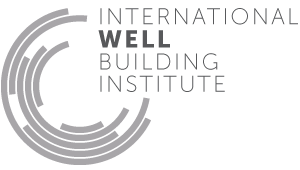Microbe and mold control
- 1 Air quality standards
- 2 Smoking ban
- 3 Ventilation effectiveness
- 4 VOC reduction
- 5 Air filtration
- 6 Microbe and mold control
- 7 Construction pollution management
- 8 Healthy entrance
- 9 Cleaning protocol
- 10 Pesticide management
- 11 Fundamental material safety
- 12 Moisture management
- 13 Air flush
- 14 Air infiltration management
- 15 Increased ventilation
- 16 Humidity control
- 17 Direct source ventilation
- 18 Air quality monitoring and feedback
- 19 Operable windows
- 20 Outdoor air systems
- 21 Displacement ventilation
- 22 Pest control
- 23 Advanced air purification
- 24 Combustion minimization
- 25 Toxic material reduction
- 26 Enhanced material safety
- 27 Antimicrobial surfaces
- 28 Cleanable environment
- 208 Injury prevention
06. Microbe and mold control
Mold often grows on cooling coils in HVAC systems due to condensation and can be introduced into the building's indoor air. It is also prevalent on or within wall assemblies if water damage occurs or if there is improper detailing in humid locations such as kitchens and bathrooms. Mold spores can cause allergic reactions and respiratory problems that in some cases can be severe.
This feature requires the use of ultraviolet germicidal irradiation (UVGI) devices to manage mold and bacteria on cooling coils as well as inspections for signs of mold outside of the air handling system.
The following requirements are met:
Urea-formaldehyde presence is limited in the following components to 100 ppm:

Applicability Matrix
| Core & Shell | Tenant Improvement | New Construction | |
|---|---|---|---|
| Part 2: Mold Inspections | - | P | P |
| Part 5: Urea-Formaldehyde Restriction | - | O | O |
| Commercial Kitchen | Schools | Multifamily Residential | Restaurant | Retail | |
|---|---|---|---|---|---|
| Part 2: Mold Inspections | P | P | P | P | P |
| Part 5: Urea-Formaldehyde Restriction | O | O | O | O | O |
Verification Methods Matrix
| Letters of Assurance | Annotated Documents | On-Site Checks | |
|---|---|---|---|
|
PART 2 (Performance) Mold Inspections |
Auditor Inspection | ||
|
PART 5 (Design) Urea-Formaldehyde Restriction |
Architect |
| 6.1.b |
NADCA's White Paper on Ultraviolet Lighting Applications in HVAC Systems states that to avoid ozone production, use UVC lamps with a wavelength of 254 nm. |
| 6.2.a |
The National Healthy Housing Standard states that building materials affected by mold or mildew should be cleaned, dried, and repaired. It also states that interior and exterior surfaces shall have no signs of visible mold growth. |
| 6.2.b |
The National Healthy Housing Standard states that the foundation, roof, roofing components, exterior walls, doors, skylights and windows shall be free of persistent dampness or moisture. |
